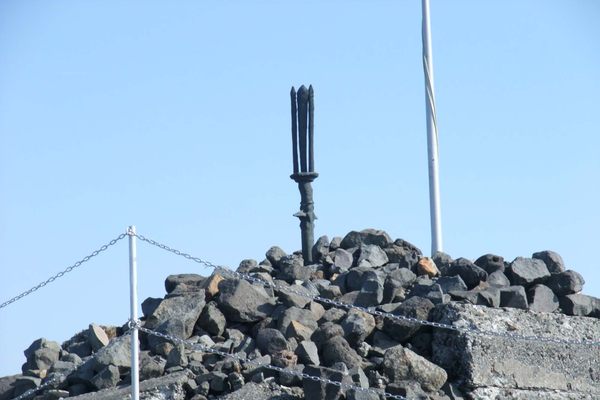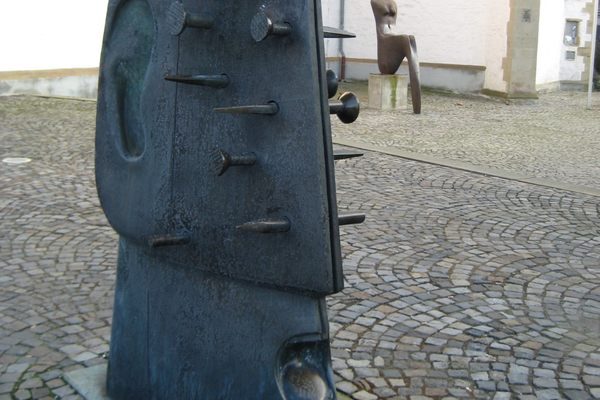Sun Messe Nichinan
These seven moai figures are the world's only sanctioned replicas of the Easter Island originals.
Easter Island is home to 900 stone monoliths called “moai.” They are often characterized as “heads,” but they are actually entire bodies with the extra-large heads taking up over a third of the full figure. The forms of the moai are not all the same, but to the Polynesian people, they are all sacred.
Nine thousand miles away, on the southern tip of Japan, seven moai statues rise up from a cliff at the Pacific Ocean, mimicking the famous figures of the largest “ahu” (a kind of stone plaza or platform) on Easter Island, called Tongariki.
The figures anchor a seaside park in the Japanese city of Nichinan-shi, and it is said to be the only place in the world that is officially sanctioned to replicate the real moai. There are seven figures in all, each with a double meaning: each one is responsible for a specific blessing (good health, love, leisure, marriage, money, business, and academic study), and also to represent the spirit of seven legendary Easter Island explorers.
The park opened in 1996, and the statues are the main attraction (besides the spectacular ocean views of course). There is a moai-themed museum, several gardens and trails, and plenty of opportunity to stock up on moai charms and trinkets from the gift shop–to take home and make your own “ahu.”
Know Before You Go
The site is the southern tip of Japan, along the Pacific Coast. It's about a 40-minute drive from Miyazaki Airport. There is also a bus that runs between Aburatsu and Miyazaki that stops right in front of the driveway.
The park is open every day from 9:30am to 5pm (except they are closed the first and third Wednesday of each month other than August). Adult ¥700, students ¥500, and kids 4 and younger ¥350. Parking is free.




















Follow us on Twitter to get the latest on the world's hidden wonders.
Like us on Facebook to get the latest on the world's hidden wonders.
Follow us on Twitter Like us on Facebook